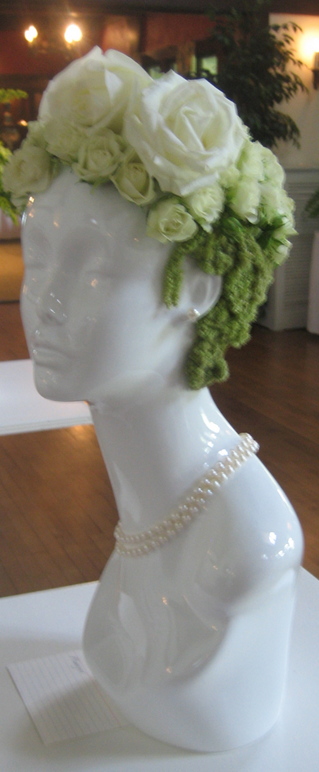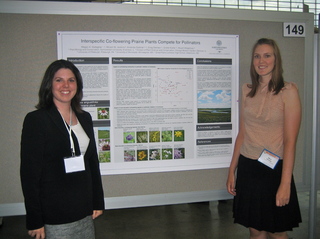|
|
Every summer the Echinacea Project provides employment and internships for undergraduate students, recent graduates, graduate students, and others starting or expanding their science or conservation careers. Our summer researchers receive training, gain skills, and get much and diverse experience. In turn, summer field researchers contribute immensely to the project. We accomplish a lot every summer.
- 2023
- Harrison Aakre, Alexandria High School, MN
- Jan Anderson, Portland State University, OR
- Jared Beck, postdoc, Chicago Botanic Garden
- Alexa Blume, West Central Area High School, MN
- Alex Carroll, University of Minnesota-Morris, MN
- Jak Davis, College of Wooster, OH
- Daytona Hoberg, Morris Area High School, MN
- El Johnson, North Dakota State University, ND
- Margaret Medini, St. Catherine University, MN
- Wyatt Mosiman, Northwestern University, IL
- Lindsey Paulson, Gustavus Adolphus College, MN
- Liam Poitra, University of Minnesota-Morris, MN
- Blaire Reuter, West Central Area High School, MN
- Victoria Romero, Peach Tree Ridge High School, GA
- Luke Settles, Illinois College, IL
- Abby Widell, University of Wisconsin-Madison, WI
- 2022
- Jared Beck, postdoc, Chicago Botanic Garden
- Alex Carroll, University of Minnesota-Morris, MN
- Manogya Chandar, Northeastern University, MA
- Sophia Chen, Lake Forest College, IL
- Nate Hauser, Minnewaska Area High School, MN
- Daytona Hoberg, Morris Area High School, MN
- Britney House, Morris Area High School, MN
- Joey McGarry, Northwestern University, IL
- Lindsey Paulson, Gustavus Adolphus College, MN
- Kennedy Porter, West Central Area High School, MN
- Emma Reineke, University of Minnesota-Twin Cities, MN
- Johanna Steensma, Skidmore College, NY
- Mia Stevens, College of Wooster, OH
- Amy Waananen, graduate student, University of Minnesota-Twin Cities, MN
- Geena Zebrasky, Gustavus Adolphus College, MN
- 2021
- Laura Beld, Morris Area High School, MN
- Kennedy Porter, West Central Area High School, MN
- Emma Reineke, Alexandria Area High School, MN
- Wesley Michaels, Northwestern University, IL
- Maris Woldin, College of Wooster, OH
- Allie Radin, Binghamton University, IL
- Miyauna Incarnato, College of Wooster, OH
- Drake Mullett, graduate student, Northwestern University, IL
- Lea Richardson, graduate student, Northwestern University, IL
- Amy Waananen, graduate student, University of Minnesota-Twin Cities, MN
- Alex Wicker, Jackson Middle School, FL
- John Van Kempen, West Central Area High School, MN
- Jennifer Ison, College of Wooster, OH
- Mia Stevens, College of Wooster, OH
- Jared Beck, Chicago Botanic Garden
- Alex Carroll, University of Minnesota-Morris, MN
- 2020
- Amy Waananen, graduate student, University of Minnesota, MN
- Allie Radin, Binghamton University, NY
- Anna Meehan, Alexandria Area High School, MN
- Anna Allen, Alexandria Area High School, MN
- Devon Davis, Cornell University, NY
- Drake Mullett, graduate student, Northwestern U, IL
- Emma Greenlee, Carleton College, MN
- Erin Eichenberger, graduate student, North Carolina State University, NC
- John Van Kempen, high school teacher, West Central Area High School
- Lea Richardson, graduate student, Northwestern U, IL
- Mia Stevens, College of Wooster, OH
- Riley Thoen, graduate student, University of Georgia, GA
- 2019
- Julie Bailard, Carleton College, MN
- Erin Eichenberger, College of William and Mary, VA
- Jay Fordham, Gustavus Adolphus College, MN
- Miyauna Incarnato, College of Wooster, OH
- Jennifer Ison, Assistant professor of biology, College of Wooster, OH
- Shea Issendorf, Alexandria Area High School, MN
- Ren Johnson, College of Wooster, OH
- Michael LaScaleia, graduate student, University of Connecticut, CT
- Drake Mullett, graduate student, Northwestern University, IL
- Avery Pearson, College of Wooster, OH
- Riley Thoen, Gustavus Adolphus College, MN
- John Van Kempen, high school teacher, West Central Area High School
- Amy Waananen, graduate student, University of Minnesota, MN
- 2018
- Andy Hoyt, Carleton College, MN
- Jennifer Ison, Assistant professor of biology, College of Wooster, OH
- Evan Jackson, College of Wooster, OH
- Morgan Kirwin, Morris Area School, MN
- Kristen Manion, graduate student Northwestern University, IL
- Bridgid Mark, College of Saint Benedict and Saint John’s University, MN
- Michael LaScaleia, Tufts University, MA
- Will Reed, graduate student, University of Colorado Boulder, CO
- Mia Stevens, College of Wooster, OH
- Riley Thoen, Gustavus Adolphus College, MN
- John Van Kempen, high school teacher, West Central Area High School
- Anna Vold, Minnewaska Area High School, MN
- Amy Waananen, graduate student, University of Minnesota, MN
- Zeke Zelman, College of Wooster, OH
- 2017
- Wesley Braker, St. Olaf College, MN
- Alexander Hajek, College of Wooster, OH
- Tracie Hayes, U North Carolina at Chapel Hill
- Kristen Manion, graduate student, Northwestern U
- Will Reed, University of Minnesota-Twin Cities
- Lea Richardson, graduate student, Northwestern U
- Anna Vold, Minnewaska Area High School, MN
- 2016
- James Eckhardt, Gustavus Adolphus, MN
- Alexander Hajek, College of Wooster, OH
- Danny Hanson, Carleton College, MN
- Jennifer Ison, Assistant Professor, College of Wooster, OH
- Alyson Jacobs, College of Wooster, OH
- Laura Leventhal, College of Wooster, OH
- Scott Nordstrom, College of William and Mary, VA
- Leah Prescott, College of Wooster, OH
- Lea Richardson, Chicago Botanic Garden & Northwestern Univ, IL
- Will Reed, University of Minnesota-Twin Cities
- Abby Van Kempen, West Central Area High School, MN
- Amy Waananen, St. Olaf College, MN
- 2015
- Lea Chesney, Teacher, North Hollywood High School, CA
- Alison Hall, Carleton College, MN
- Danny Hanson, Carleton College, MN
- Taylor Harris, Fisk University, TN
- Gina Hatch, Carleton College, MN
- Ben Lee, St. Mary’s College of Maryland
- Matt Olhoft, Teacher, West Central Area High School, MN
- Will Reed, University of Minnesota-Twin Cities
- Katherine Schneider, University of Wisconsin-Madison
- Abby Van Kempen, West Central Area High School, MN
- Amy Waananen, St. Olaf College, MN
- 2014
- Jared Beck, Carleton College, MN
- Claire Ellwanger, Bowdoin College, ME
- Allison Grecco, DePaul University, IL
- Keaton Holsinger, Wabash College, IN
- Elizabeth Mays, Colorado College, CO
- Maureen Page, Scripps College, CA
- Will Reed, Jefferson High School, MN
- Cam Shorb, Carleton College, MN
- 2013
- Sarah Baker, Saint Catherine University, MN
- Dayvis Blasini, Northeastern Illinois University
- Lydia English, Carleton College, MN
- Mike Howe, Gustavus Adolphus College, MN
- Pamela Kittelson, Gustavus Adolphus College, MN
- Kory Kolis, Gustavus Adolphus College, MN
- Reina Nielsen, Gustavus Adolphus College, MN
- Ilse Renner, University of Wisconsin Eau Claire
- Marie Schaedel, Carleton College, MN
- Sara Zufan, Chicago Public Schools, IL
- Amy Dykstra, Bethel University, MN * part-time
- Jennifer Ison, Wabash College, IN * part-time
- 2012
- Jillian Gall, College of the Atlantic, ME
- Lydia Kan, Bethel College, St. Paul, MN
- Kelly Kapsar, Carleton College, MN
- Andrew Kaul, St. Olaf College, MN
- Shona Sanford-Long, Middlebury College, VT
- Katherine Muller, Northwestern University, IL
- Maria Wang, Northwestern University, IL
- Karen Taira, Northwestern University, IL
- Greg Dierson, Great Plains High School, Watertown, SD
- Amy Dykstra, University of Minnesota, Twin Cities
- 2011
- Nicholas Goldsmith, Purdue University, IN
- Lee Rodman, Grinnell College, IA
- Amber Zahler, Lake Forest College, IL
- Katherine Muller, Northwestern University, IL
- Josh Drizin, Northwestern University, IL
- Amber Eule-Nashoba, University of Minnesota, Twin Cities
- Callin Switzer, John F. Kennedy Middle School, Gallup, NM
- Maria Wang, Northwestern University, IL
- Greg Dierson, Great Plains High School, Watertown, SD
- Amy Dykstra, University of Minnesota, Twin Cities
- 2010
- Lauren Hobbs, University of Virginia
- Ian Holmen, Carleton College, MN
- Greg Diersen, Great Plains Lutheran High School, SD
- Laura Townsend, Florida International University
- Katie Koch, Lakeland College, WI
- Hillary Lyons, Carleton College, MN
- Josh Drizin, Northwestern University, IL
- Kate Gallagher, Northwestern University, IL
- Amy Dykstra, University of Minnesota
- 2009
- Allegra Halverson, McGill University, Canada
- Daniel Rath, Carleton College, MN
- Greg Diersen, Great Plains Lutheran High School, SD
- Mimi Jenkins, University of Pittsburgh, PA
- Andrea Jilling, McGill University, Canada
- Amanda Gallinat, Carleton College, MN
- Kate Gallagher, Northwestern University, IL
- Megan Jensen, Northwestern University, IL
- Amy Dykstra, University of Minnesota
- 2008
- Julie Stutzbach, Beloit College, WI
- Lecia Babeu, University of Vermont
- Ben Iberle, Grinnell College, IA
- Denise Feng, Bard College, NY
- Lani Rosenthal, Whitman College, CA
- Megan Jensen, Northwestern University, IL
- Christine Dumoulin, Northwestern University, IL
- Amy Dykstra, University of Minnesota
- 2007
- Amy Alstad, Carleton College, MN
- Ian Grettenberger, Western Washington University
- Julie Nicol, Carleton College, MN
- Josh Drizin, Denison University, OH
- Jameson Pfeil, Denison University, OH
- Colin Venner, Denison University, OH
- Rachel Mills, University of Minnesota
- 2006
- Laura Jensen, University of Minnesota, Duluth
- Aki Tanimoto, Barnard College, NY
- Rachel Gross, University of Pennsylvania
- Rachel Mills, University of Minnesota
- Andrea Southgate, Northwestern University, IL
- 2005
- Kelly Hereid, Carleton College, MN
- Kellie Carim, Carleton College, MN
- Will Stutz, Carleton College, MN
- 2004
- Andra Forney, Trent University, ON
- Steph Pimm, Carleton College, MN
- Jens Stevens, Carleton College, MN
- Katie Stuble, St Mary’s College, MD
- 2003
- Jennifer Ison, St. Olaf College, MN
- Rachel Clark, Beloit College, WI
- Nancy VanDyke, Bowdoin College, ME
- Peter Harrison, Humboldt State, CA
- 2002
- Monica Poelchau, Grinnell College, IA
- Andrea Grunst, Carleton College, MN
- Melissa Grunst, Carleton College, MN
- Sarina Jepsen, University of Oregon
- 2001
- Jen Jacobs, University of California, Santa Cruz
- Phil Kopf, Truman State University, MO
- 1995 – 2000
- Jeannette Martinez 2000, University of California, Davis
- Steve Kehler 1999, Oberlin College, OH
- Sara Tackett 1998, University of Michigan
- Matthew Miller 1997, University of California, San Diego
- Nathan Reiner 1996, West Central Area High School
- Glen Koons 1995
-
Photos…
 The 2022 crew (missing Nate Hauser and Manogya Chandar)  The 2021 crew (missing Emma Reineke)  The 2020 crew (missing Drake Mullet)  The 2019 summer crew on Day 1 of the field season!  A photo from 2015.
 A photo from 2014. Click to enlarge 
A photo from 2013. Click to enlarge
  
Some photos from 2012. Click to enlarge
 
Some photos from 2011. Click to enlarge
 
Some photos from 2010. Click to enlarge
 
Some photos from 2009. Click to enlarge
 
Some photos from 2008. Click to enlarge
 
Some photos from 2005. Click to enlarge
 
Some photos from 2004. Click to enlarge
 
Some photos from 2002. Click to enlarge
Get involved with the Echinacea Project at our field site or in our lab at the Chicago Botanic Garden. Please contact us if you have any questions.
 Summer 2023 teams says, “Echinacea!” Team Echinacea strives to create an inclusive, collaborative, stimulating, positive, fun, and productive environment for all regardless of race, ethnicity, gender, age, sexual orientation, and economic background. We welcome and encourage individuals from groups historically excluded from sciences and conservation. If you are interested in learning about and contributing to science and conservation, please join our team. We are committed to recruiting, training, and supporting individuals interested in science, education, and conservation from diverse backgrounds.
- Summer Field Research in Minnesota
- Learn about what it’s like working with Team Echinacea.
Lab Research at the Chicago Botanic Garden
Check out ways to get involved during the academic year.
Year-Round Positions
Interested in lab and field work? Here are the ways you can do both!
- Research intern. Applications closed for 2024. Check back next year!
- Graduate student at Northwestern University and University of Minnesota. Applications open for 2024-2025 academic year.
Applications for the Northwestern M.S. program are due February 15th.
Applications for the Northwestern Ph.D. program are due December 1st.
- Post-doctoral researcher (none currently available).
Investigate ecology and evolution in fragmented prairies as a member of Team Echinacea. Join us!
 Research interns 2019-20 Erin (far left) and Riley (far right) at the Chicago Botanic Garden with undergraduates from Carleton College (Jack, Eli, Emma and Julie)

The tallgrass prairie used to be a vast continuous expanse of habitat harboring diverse populations of plants and animals. Now prairie habitat exists in small and isolated patches. How long will small remnant populations persist and what can we do to conserve them? To answer this central question in conservation biology requires better understanding of some basic biological processes and how they interact.
R esearchers have taken two distinct approaches to understanding population persistence in remnant habitat patches. One approach investigates the ecological dynamics of fragmented landscapes focusing on environmental factors such as lack of fire, disrupted species interactions (e.g. plant-pollinators), colonization of remnants from other remnants, competition with invasive weeds, and demographic stochasticity. Another approach investigates genetic issues experienced by small populations in fragmented habitat, such as loss of genetic diversity by drift, inbreeding depression, genetic swamping from nearby reintroductions, and outbreeding depression in restorations. Rarely does a single investigation account for both genetic and ecological dynamics when modeling the persistence of populations. esearchers have taken two distinct approaches to understanding population persistence in remnant habitat patches. One approach investigates the ecological dynamics of fragmented landscapes focusing on environmental factors such as lack of fire, disrupted species interactions (e.g. plant-pollinators), colonization of remnants from other remnants, competition with invasive weeds, and demographic stochasticity. Another approach investigates genetic issues experienced by small populations in fragmented habitat, such as loss of genetic diversity by drift, inbreeding depression, genetic swamping from nearby reintroductions, and outbreeding depression in restorations. Rarely does a single investigation account for both genetic and ecological dynamics when modeling the persistence of populations.

Bringing the two approaches together. Our overall research approach is to simultaneously investigate ecological and evolutionary processes and how they interact in the same study system. We use experiments, observational studies, and modeling approaches to answer our questions. Empirically, we focus on a model study system: a common native prairie plant Echinacea angustifolia (Asteraceae) growing in remnant populations within an agricultural landscape in western Minnesota. This widespread purple coneflower isn’t rare or endangered, but it serves as a good model for prairie plants because it has traits like self-incompatibility and a long lifetime. These traits are well represented in the prairie flora.
 Contributions to conservation & beyond. The main motivating question of this research project is applied: what can we do to better conserve prairie plants. We plan to generate concrete answers for stewards, managers, practitioners, and policymakers. Our project also addresses some very fundamental research questions and contributes to better basic scientific understanding of biological processes. Another aspect of this project is training scientists for the future. Many motivated beginning scientists have contributed to the project and gained skills and experience useful for their careers through the REU program, summer employment, internships, and as volunteers, students, and collaborators. We also promote conservation and science education among non-scientists through continuing education classes, workshops, and volunteer programs. Contact us if you are interested in joining our team. Contributions to conservation & beyond. The main motivating question of this research project is applied: what can we do to better conserve prairie plants. We plan to generate concrete answers for stewards, managers, practitioners, and policymakers. Our project also addresses some very fundamental research questions and contributes to better basic scientific understanding of biological processes. Another aspect of this project is training scientists for the future. Many motivated beginning scientists have contributed to the project and gained skills and experience useful for their careers through the REU program, summer employment, internships, and as volunteers, students, and collaborators. We also promote conservation and science education among non-scientists through continuing education classes, workshops, and volunteer programs. Contact us if you are interested in joining our team.
Read about the plant, Echinacea angustifolia.
Read about our study site.
Hey All,
It’s been a very busy couple of weeks:
On July 27th I spoke at the Garden Club of America Zone 11 Annual Meeting in Lake Geneva. I was there for less than 48hrs, but I still had a wonderful time. I received the GCA’s Fellowship in Ecological Restoration to support my Master’s project, which is why I was asked to attend at all. I was pretty nervous about the speech, but in the end I think it went pretty well. They were a great audience and after this experience I feel much more confident about public speaking.
After I gave my talk, I was able go see the GCA flower show, which was really interesting. There were some pretty cool displays. I especially like the hats made of flowers, the miniatures, and the photography. They also had these challenge events where everyone was given the same supplies and theme and had a fixed amount of time to create a display. The GCA has some very creative members.
That evening we were given a tour of the lake on a boat called the Louise, where we had h’ors d’oeuvres and cocktails. The boat dropped us off at a GCA member’s house for dinner. It was a lot of fun!
The next day I got to hear Kathryn Kennedy, the president of the Center for Plant Conservation, speak. She gave an excellent talk about endangered species and the challenges we face in protecting these high-risk plants in the coming decades. I was totally revved afterwords, so she did her job.
Pictures from the GCA trip:



After I got back from Wisconsin, I had to turn around and finish working on the poster for the ESA conference. After much work, and help from Stuart, Amy, and Josh, I finally finished the poster.
I drove to St. Cloud to print both the FNC poster and Allegra’s poster, and then on Sunday Stuart and I went to the ESA conference in Pittsburgh. Mimi, the REU intern from last year, was able to join us for the conference on Monday. It was great to see her again. She’s currently working at Frick park as a Outdoorsy type summer camp counselor. She’ll be leaving in September to teach English in Guadalupe. Should be fun!
Mimi and I got a lot of great feedback on our poster during the poster session, and I’m pretty confident that with everyone’s help we can write an interesting paper.
The poster is entitled: Interspecific Co-flowering Prairie Plants Compete for Pollinators.
Here’s the abstract we submitted:
Background/Question/Methods:
Pollen limitation is prevalent in many species, and can be especially worrisome in fragmented landscapes. Reproduction in the purple coneflower, Echinacea angustifolia (Asteraceae), which grows in small remnant patches of tallgrass prairie in North America, is pollen limited, but not pollinator limited.
Pollen limitation of Echinacea increases with isolation of individual plants, decreases with size of population, and has a strong negative impact on reproduction. However, pollinator visitation does not explain the reduced reproductive success. Wagenius and Lyon (2010), found that plants in the densest and largest populations of Echinacea receive fewer pollinator visits yet have greater reproductive success than plants in small isolated populations, which receive more visits but have decreased reproductive success. Among the many prairie plants pollinated by native solitary generalist bees, interspecific co-flowering plants may either enhance pollination by attracting more pollinators, or reduce reproductive success through competition or interference with compatible pollen receipt (Feldman 2008, Mitchell et al 2009).
Results/Conclusions
We investigated the community of co-flowering species surrounding a plant (floral neighborhood). We measured the effect of floral neighborhood on pollinator visitation, pollinator diversity, and pollination success of Echinacea. We randomly selected 8 focal plants at each of 10 remnant prairie sites in Douglas Co., Minnesota and observed and collected insect pollinators four times during summer 2009. We also identified and counted inflorescences of nearby co-flowering species.
We found strong evidence that floral neighborhood composition influences pollinator visitation of Echinacea. Forty species co-flowered with Echinacea, nine of which are invasive. Co-flowering species richness ranged from 14 in the largest remnant to five in the smallest. Alfalfa, Medicago sativa (Fabaceae), the most abundant exotic co-flowering species, occurred at seven of the sites, while leadplant, Amorpha canescens (Fabaceae), the most abundant native species (besides Echinacea), was only found at three remnants. The presence of alfalfa within a focal plant’s floral neighborhood increased the probability of a pollinator visit by 7% (according to a glm with binomial response p<0.03). In contrast, native leadplant decreased pollinator visits by 9% (p<0.02). There is no evidence that alfalfa, leadplant, and Echinacea interact in their effect on pollinator visits. We also collected pollen from Echinacea insect pollinators and flower parts to see if patterns in floral neighborhood composition and pollinator visitation are reflected in pollen loads on pollinators or stigmas.
Here’s a small copy of the actual poster:
Gallagher_ESA_Poster_Final_sm.pdf
The main conclusions were:
Neither the community of co-flowering species nor the presence of non-native plants was associated with variation in pollinator visitation.
Co-flowering species diversity was a predictor of pollinator visitation only late in the flowering season. Floral communities, as quantified by NMS analysis, were associated with the presence of non-natives all season long and overall diversity only in the early season. NMS characterizations of species co-flowering with Echinacea did not predict pollinator visitation at any time.
Echinacea neighborhoods with Amorpha, a native, had lower pollinator visitation, while the neighborhoods with Medicago, a non-native, had higher pollinator visitation.
We found no compelling evidence that interspecific co-flowering species influence pollinator visitation to Echinacea in small prairie remnants. The previously observed high pollinator visitation and concurrent pollen limitation might result from low quality of pollinator visits, an hypothesis we are now investigating.
Here’s a picture of Mimi and I in front of the poster at the conference:

Now that I’m back in Kensington, it’s time to get back to my master’s project. The work is never done! This week I’m hoping to do seedling checks for my three plots. Hope I can count on lots of help getting it done!
-Kate
Hi everyone,
I just wanted to thank everyone who helped me out in the field and helped give me advice on my poster. I am posing the final version below if anyone would like to look at it.
TownsendREU10.pdf
Hey everyone-
Thanks to all of you who gave me such great input for my poster and/or the powerpoint!
I attached a PDF of the finished poster as well as my slides for the powerpoint presentation because I know I was freaking out about fitting everything in 5 slides! So you can see how it turned out, and I have 4 extra slides if I get questions. haha.
KochkREU10.pdf
power point presentation.pptx
Now I need to practice, practice, practice the presentation! I’ll post one more flog update for how it goes on Friday. Eeek!
-Katie
Here’s the schedule of events for Barrett’s Old Settlers’ Reunion.
Hi!
Im Ian Holmen, a new REU student on the Echinacea project this year. I arrived in K-town not over a week ago after just finishing up my sophomore year at Carleton College. I recently declared myself as a biology major (a tough call between Spanish, economics, chemistry, anthropology and all those other thought invoking studies), and am hoping to absorb as much as possible from this summer experience. I have just finished up a preliminary proposal for some independent research that I hope to carry out throughout the summer. The proposal is in need of some tweaking so if anyone has some suggestions please let me know. Otherwise, stay tuned for a updated (hopefully improved) proposal in the future.
Project Proposal (rough draft).pdf
I wanted to share Diedre and Jake’s REU posters with everyone…they both did a great job!
Poster-DRfinal.pdf
JJF Poster-final.pdf
Hey yall,
Back in Chi town finally after about 10 hrs of traveling. I said “Get er done” to someone today out of habit and got a weird look. Thanks guys. I’m also going through baked goods and other delicious foods withdrawal.
Final version of poster: Jenkins REU09.pdf
Hope everyone’s doing well in K-town! I miss yall already…and my bike 🙁
ps. I knew Roxy would come through for us. Warren should’ve known better after the snake incident.
|
|






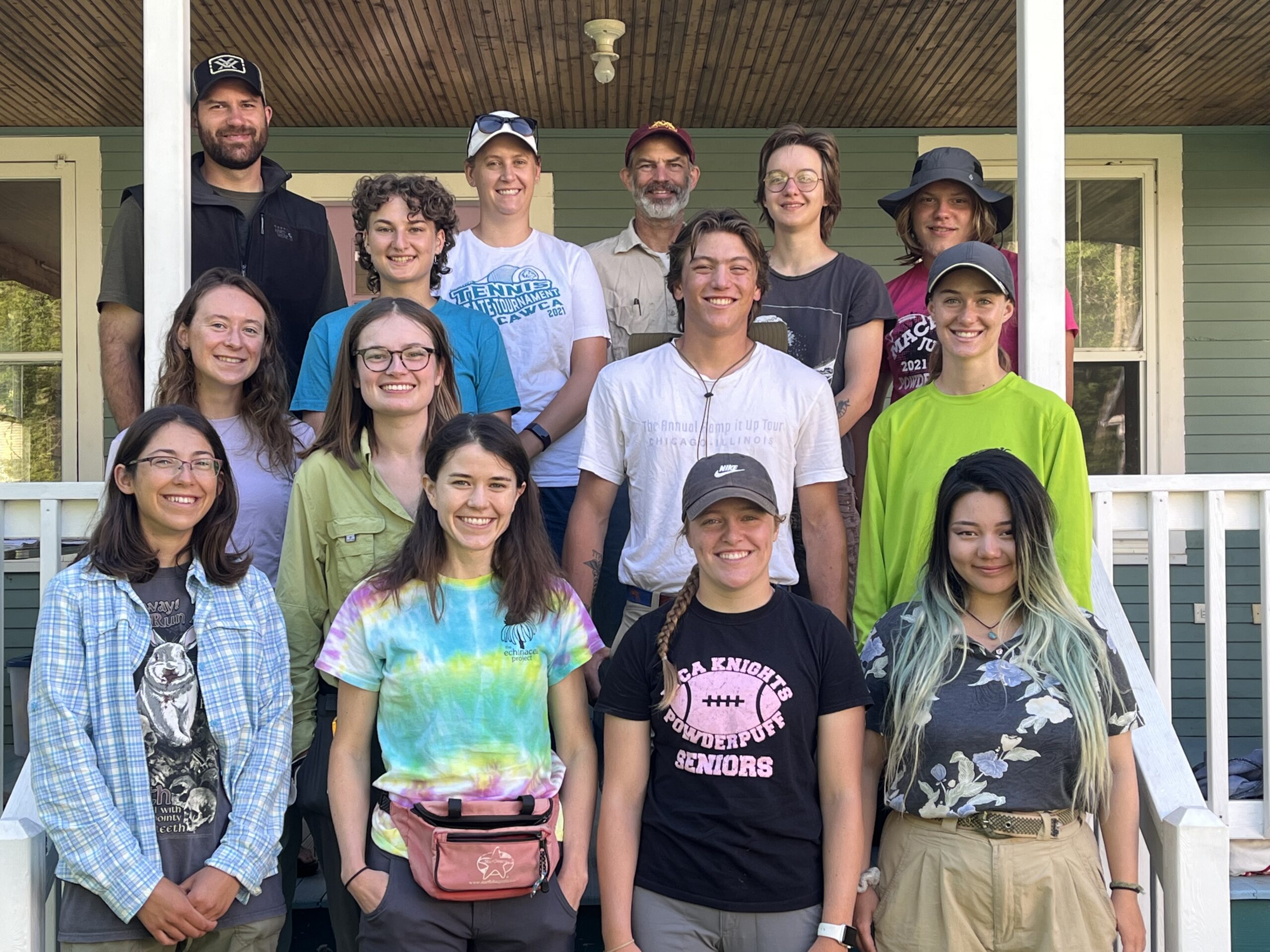
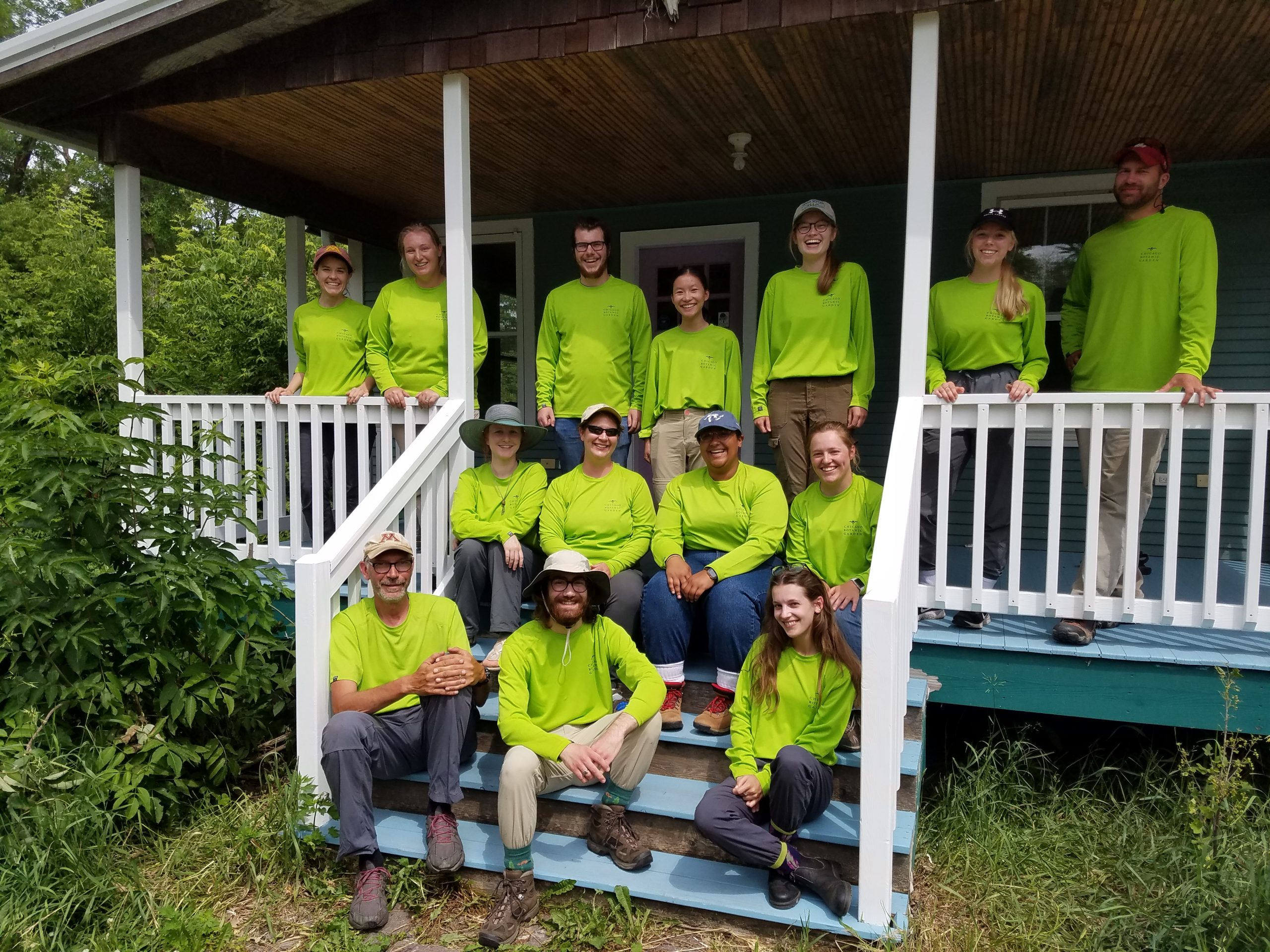
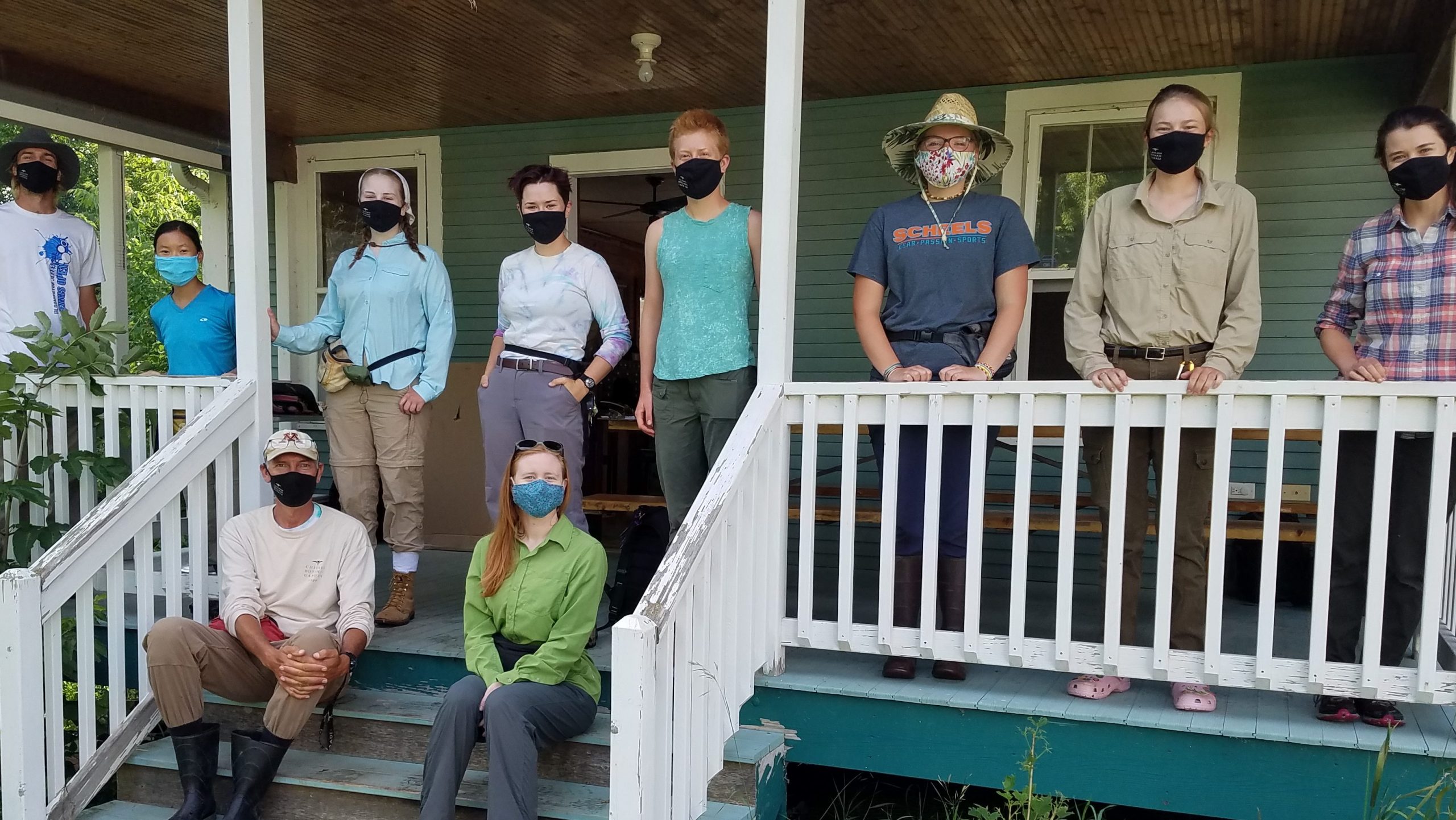

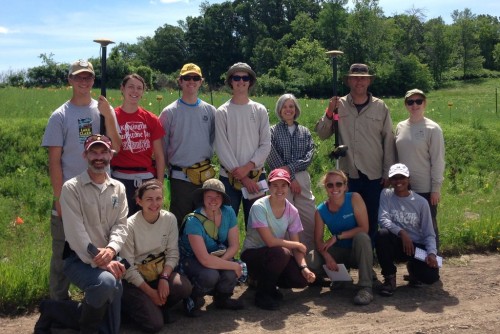
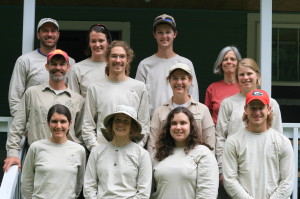


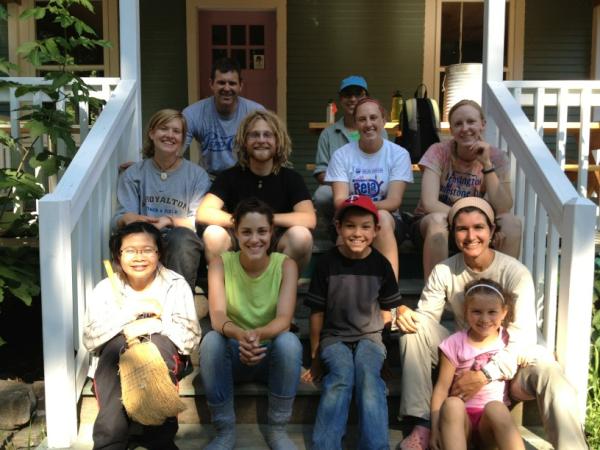
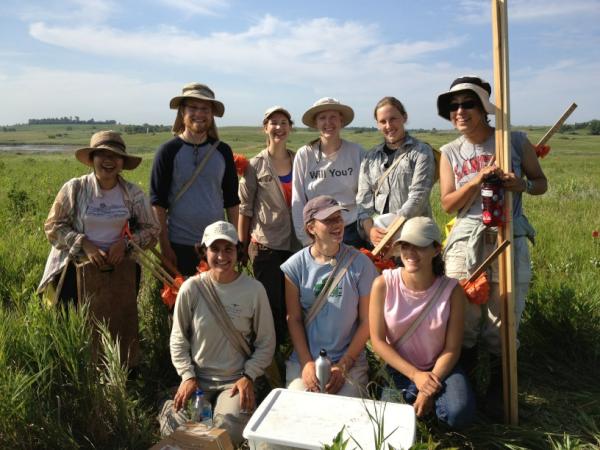

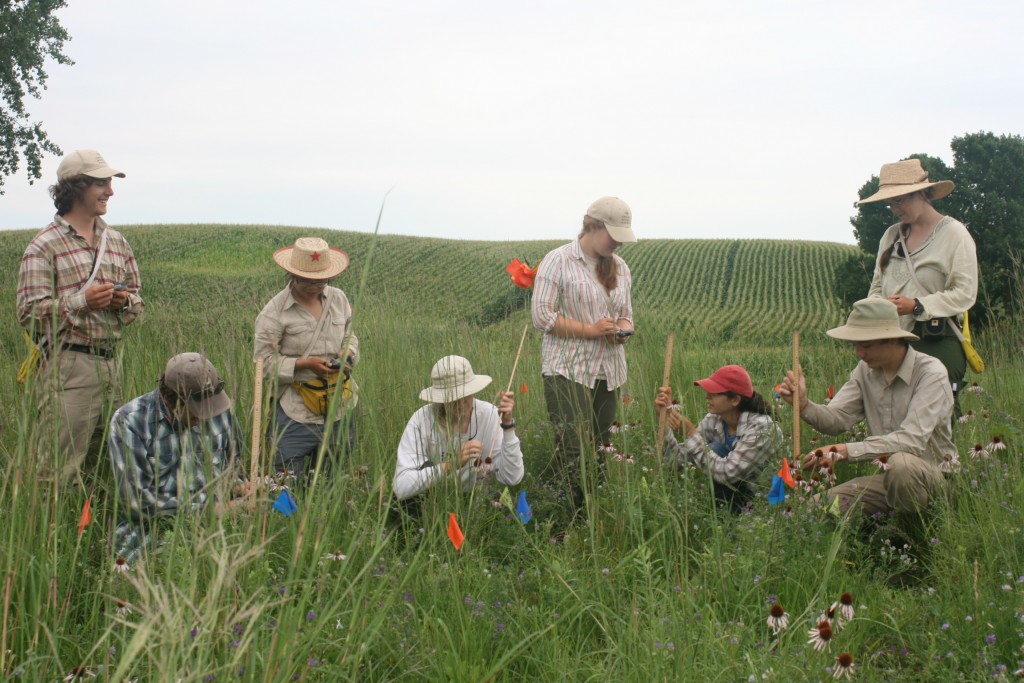
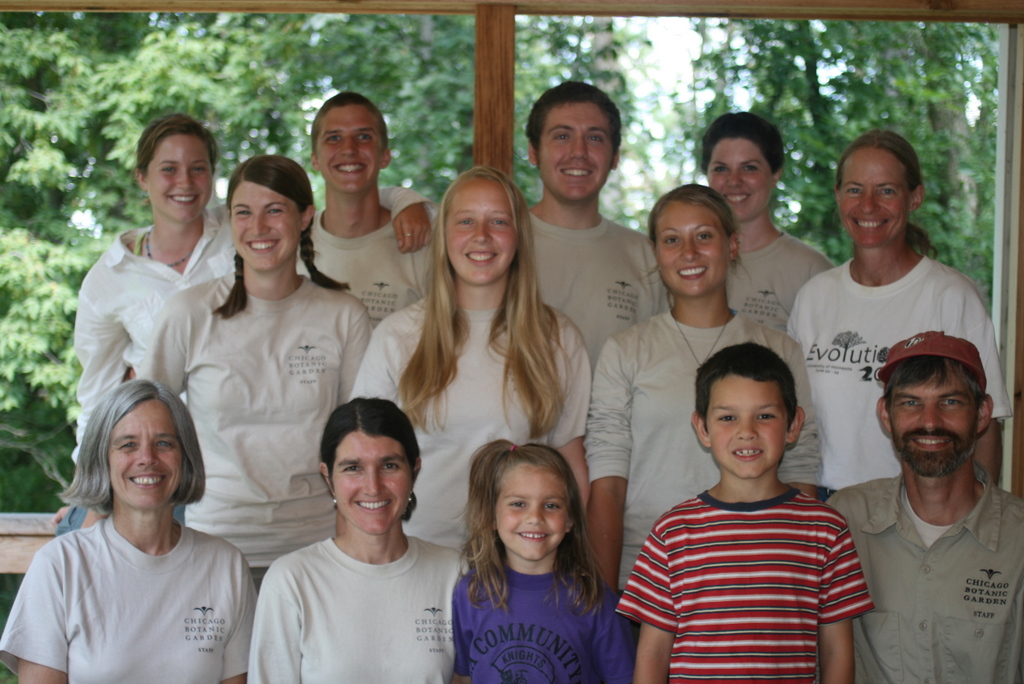
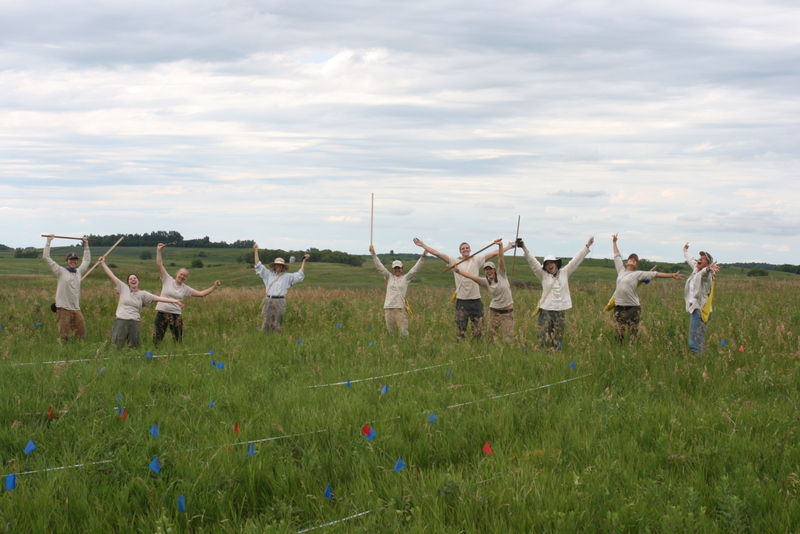


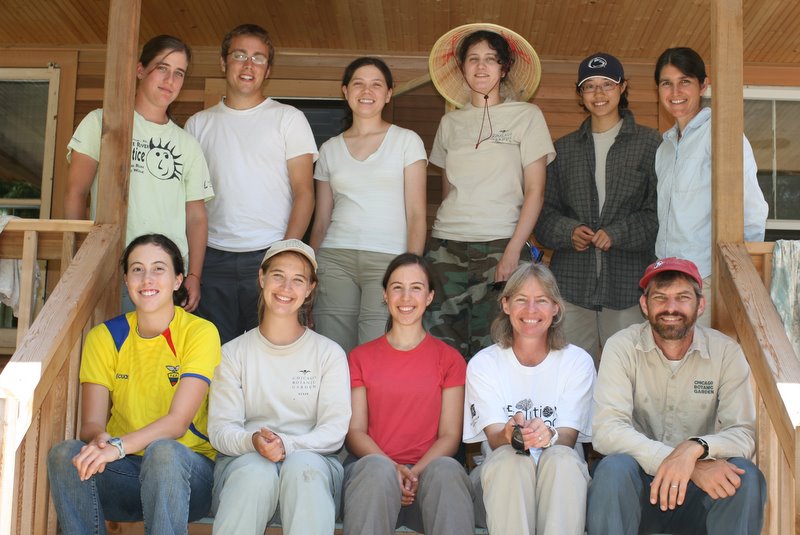


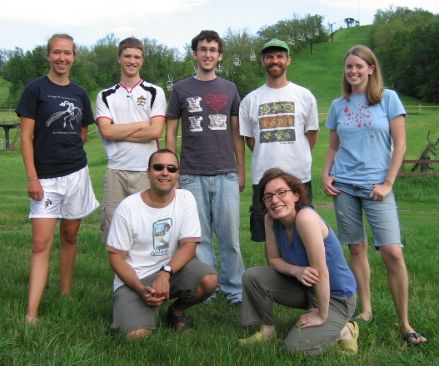
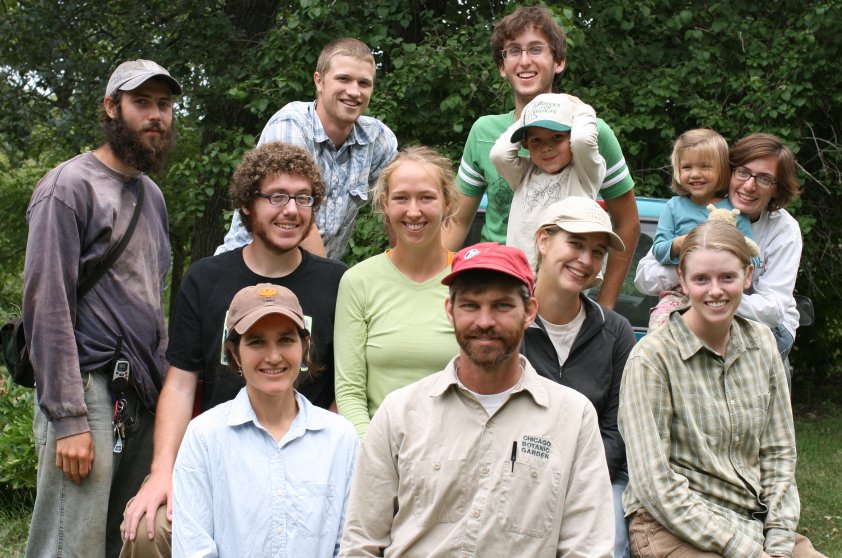

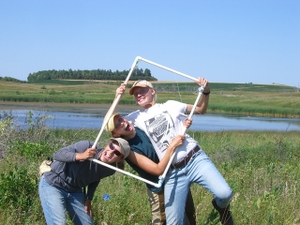
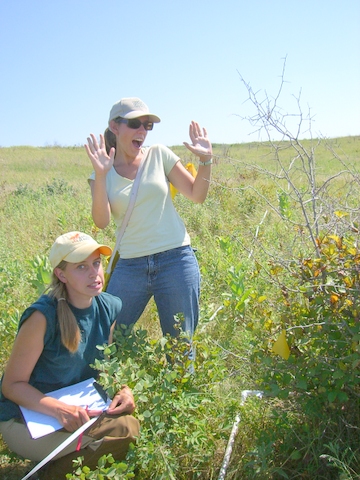
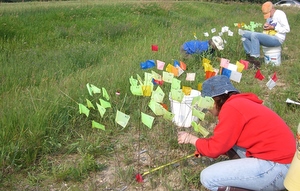
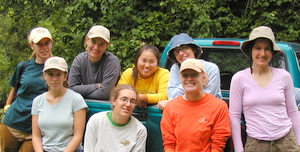

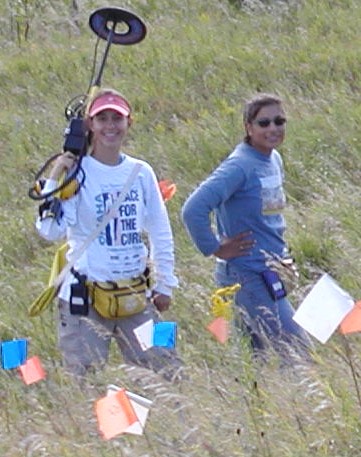

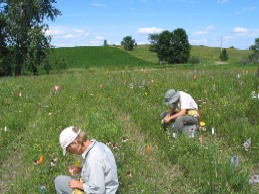
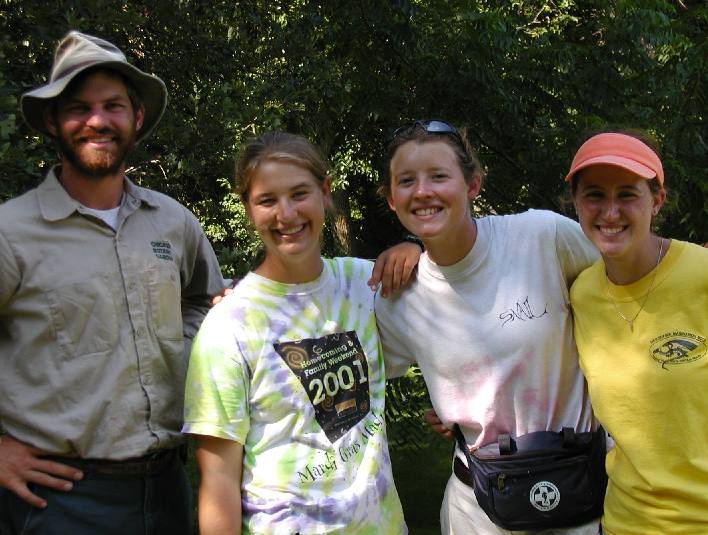


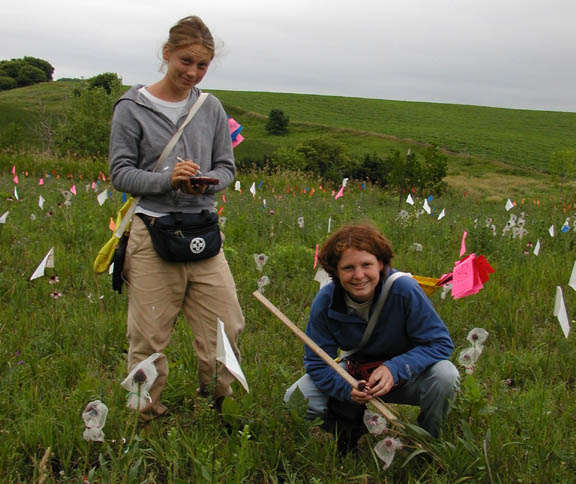
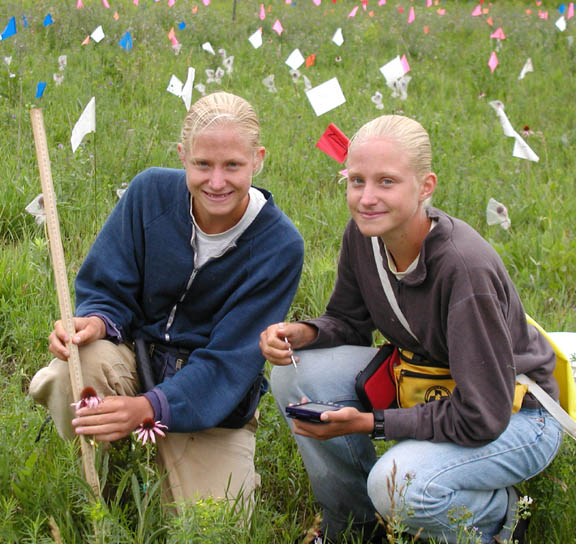




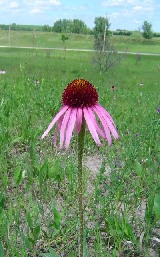
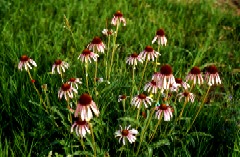 Contributions to conservation & beyond. The main motivating question of this research project is applied: what can we do to better conserve prairie plants. We plan to generate concrete answers for stewards, managers, practitioners, and policymakers. Our project also addresses some very fundamental research questions and contributes to better basic scientific understanding of biological processes. Another aspect of this project is training scientists for the future. Many motivated beginning scientists have contributed to the project and gained skills and experience useful for their careers through the REU program, summer employment, internships, and as volunteers, students, and collaborators. We also promote conservation and science education among non-scientists through continuing education classes, workshops, and volunteer programs. Contact us if you are interested in joining our team.
Contributions to conservation & beyond. The main motivating question of this research project is applied: what can we do to better conserve prairie plants. We plan to generate concrete answers for stewards, managers, practitioners, and policymakers. Our project also addresses some very fundamental research questions and contributes to better basic scientific understanding of biological processes. Another aspect of this project is training scientists for the future. Many motivated beginning scientists have contributed to the project and gained skills and experience useful for their careers through the REU program, summer employment, internships, and as volunteers, students, and collaborators. We also promote conservation and science education among non-scientists through continuing education classes, workshops, and volunteer programs. Contact us if you are interested in joining our team.